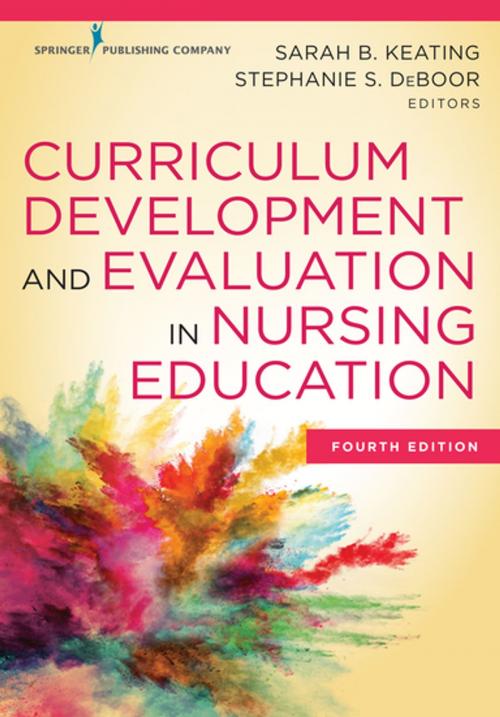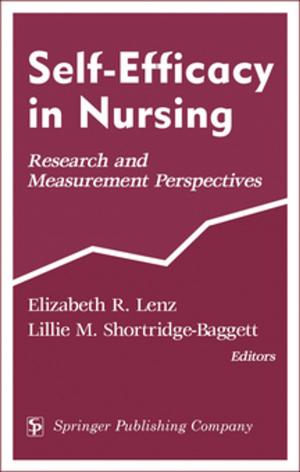Curriculum Development and Evaluation in Nursing Education, Fourth Edition
Nonfiction, Health & Well Being, Medical, Nursing, Reference| Author: | ISBN: | 9780826174420 | |
| Publisher: | Springer Publishing Company | Publication: | December 2, 2017 |
| Imprint: | Springer Publishing Company | Language: | English |
| Author: | |
| ISBN: | 9780826174420 |
| Publisher: | Springer Publishing Company |
| Publication: | December 2, 2017 |
| Imprint: | Springer Publishing Company |
| Language: | English |
"This is a detailed yet practical guide to planning, developing, and evaluating nursing curricula and educational programs. It provides a comprehensive and critical perspective on the totality of variables impacting curricular decisions...This book provides readers with a comprehensive overview of curriculum development, redesign, and evaluation processes…92 - 4 Stars"
- --Doody's Book Reviews
Reorganized and updated to deliver practical guidelines for evidence-based curricular change and development, the fourth edition of this classic text highlights current research in nursing education as a springboard for graduate students and faculty in their quest for research projects, theses, dissertations, and scholarly activities. It also focuses on the specific sciences of nursing education and program evaluation as they pertain to nursing educators. New chapters address the role of faculty regarding curriculum development and approval processes in changing educational environments; course development strategies for applying learning theories, educational taxonomies, and team-building; needs assessment and the frame factors model; ADN and BSN and pathways to higher degrees; and planning for doctoral education.
The fourth edition continues to provide the detailed knowledge and practical applications necessary for new and experienced faculty to participate in essential components of the academic role—instruction, curriculum, and evaluation. At its core, the text discusses the importance of needs assessment and evidence as a basis for revising or developing new programs and highlights requisite resources and political support. With a focus on interdisciplinary collaboration, the book addresses the growth of simulation, how to help new faculty transition into the academic role, and use of curriculum in both practice and academic settings. Additionally, the book describes the history and evolution of current nursing curricula and presents the theories, concepts, and tools necessary for curriculum development. Chapters include objectives, discussion points, learning activities, references, and a glossary.
New to the Fourth Edition:
- Reorganized and updated to reflect recent evidence-based curricular changes and developments
- Highlights current research
- New chapter: Implementation of Curriculum – Course Development Strategies for the Application of Learning Theories, Educational Taxonomies, and Instruction Team-Building
- New chapter on Planning for Undergraduate Programs
- New content on Needs Assessment and the Frame Factors Model
- New content on Planning for Doctoral Education in Nursing
- New content on curriculum evaluation, financial support, budget management, and use of evidence
Key Features:
- Supports new faculty as they transition to academe
- Addresses the need for preparing more faculty educators as defined by IOM report, the ACA, and the Consensus Model
- Describes the scope of academic curriculum models at every practice and academic level
- Threads the concept of interdisciplinary collaboration in education throughout
- Serves as a CNE Certification Review
"This is a detailed yet practical guide to planning, developing, and evaluating nursing curricula and educational programs. It provides a comprehensive and critical perspective on the totality of variables impacting curricular decisions...This book provides readers with a comprehensive overview of curriculum development, redesign, and evaluation processes…92 - 4 Stars"
- --Doody's Book Reviews
Reorganized and updated to deliver practical guidelines for evidence-based curricular change and development, the fourth edition of this classic text highlights current research in nursing education as a springboard for graduate students and faculty in their quest for research projects, theses, dissertations, and scholarly activities. It also focuses on the specific sciences of nursing education and program evaluation as they pertain to nursing educators. New chapters address the role of faculty regarding curriculum development and approval processes in changing educational environments; course development strategies for applying learning theories, educational taxonomies, and team-building; needs assessment and the frame factors model; ADN and BSN and pathways to higher degrees; and planning for doctoral education.
The fourth edition continues to provide the detailed knowledge and practical applications necessary for new and experienced faculty to participate in essential components of the academic role—instruction, curriculum, and evaluation. At its core, the text discusses the importance of needs assessment and evidence as a basis for revising or developing new programs and highlights requisite resources and political support. With a focus on interdisciplinary collaboration, the book addresses the growth of simulation, how to help new faculty transition into the academic role, and use of curriculum in both practice and academic settings. Additionally, the book describes the history and evolution of current nursing curricula and presents the theories, concepts, and tools necessary for curriculum development. Chapters include objectives, discussion points, learning activities, references, and a glossary.
New to the Fourth Edition:
- Reorganized and updated to reflect recent evidence-based curricular changes and developments
- Highlights current research
- New chapter: Implementation of Curriculum – Course Development Strategies for the Application of Learning Theories, Educational Taxonomies, and Instruction Team-Building
- New chapter on Planning for Undergraduate Programs
- New content on Needs Assessment and the Frame Factors Model
- New content on Planning for Doctoral Education in Nursing
- New content on curriculum evaluation, financial support, budget management, and use of evidence
Key Features:
- Supports new faculty as they transition to academe
- Addresses the need for preparing more faculty educators as defined by IOM report, the ACA, and the Consensus Model
- Describes the scope of academic curriculum models at every practice and academic level
- Threads the concept of interdisciplinary collaboration in education throughout
- Serves as a CNE Certification Review















